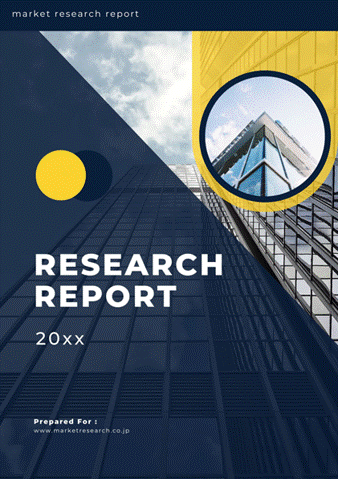 | • レポートコード:MRC2106A107 • 出版社/出版日:Mordor Intelligence / 2021年5月25日 • レポート形態:英文、PDF、150ページ • 納品方法:Eメール(受注後2-3営業日) • 産業分類:物流 |
| Single User | ¥481,000 (USD3,250) | ▷ お問い合わせ |
| Team User | ¥555,000 (USD3,750) | ▷ お問い合わせ |
| Corporate License | ¥962,000 (USD6,500) | ▷ お問い合わせ |
• お支払方法:銀行振込(納品後、ご請求書送付)
レポート概要
| 本調査レポートでは、コールドチェーン物流のトルコ市場について調査・分析を行い、イントロダクション、調査手法、エグゼクティブサマリー、市場インサイト・動向、サービス別分析、温度別分析、エンドユーザー別分析、競争状況、市場の未来などを掲載しています。 |
Turkey’s strategic position, which connects Europe, Middle East, and Asia, makes it an ideal transportation and logistics hub. The cold storage capacity of the Turkey was 14 million cubic meters in 2018. Turkey ranked 8th in the world in terms of cold storage capacity. According to Global Cold Chain Alliance, the average size of the refrigerated warehouse in Turkey is about 729 cubic meters. The Refrigerated Warehouse Market Development Index of Turkey is 0.242 which is higher in the middle range index countries.
The growth of the cold chain logistics is driven by the increase in the demand for food products like dairy, fish and meat and the share of these products in the total food revenue is 35% and other factor being government initiatives towards the cold chain infrastructure development.
The pandemic has a positive effect on the cold chain logistics industry. The growing popularity of packaged foods and beverages have helped the expansion of the cold chain as the demand for temparature controlled warehousing increased. The vaccine distribution also requires a robust logistics chain and a temperature-controlled environment that supports the life of the vaccine effectively to reach the remotest corners of the country.
As Turkey is one of the world’s largest producers of food and agricultural products, the country needs a robust cold chain to ensure that its perishable goods are distributed quickly and efficiently.
Key Market Trends
The increase in the demand for fresh and frozen foods driving the cold chain growth
The rapid urbanization and proportional age of population of Turkey is driving the demand for food materials, about 90% of the country’s population live in the cities the most populated provinces are Ankara, Izmir, Istanbul, Bursa, Antalya and about 68% of the population is between the age group 15-64 years. In year 2020, Turkey imported food and beverages worth USD 5 billion from Netherlands, Argentina, USA and Russia mostly international delicacies and goods that do not have local equivalents. Turkey spends USD 3 billion on raw food ingredients and relies on imports to cover 85% of market demand. In 2020, Turkey imported foreign snacks, cookies, Dry fruits worth USD 170 million. The change in demographic and lifestyle of the population is the major growth factor for the food industry, in 2019 the revenue of processed meat was USD 4.5 billion due to the pandemic the industry has seen a sudden surge in the revenue ,the revenue rose by 12.4% to USD 5.1 billion in 2020. The cold chain logistics market is very crucial for maintaining the shelf life of these items.
Government initiatives driving the growth of the market
Turkey government is investing heavily on the infrastructure, the government announced it would be pouring USD 200 billion into infrastructure projects to support its ambitious plan to increase trade levels to USD 1.1 trillion by 2023. Turkey uses the option of fiscal incentives to channelize domestic and foreign investments for industrial development and rural-urban integration. These incentives or tax expenditures are usually available to investors for the promotion of private investment activities in selected sectors/regions depending on the scale of investment. According to ministry of Industry and Technology investment companies can invest in cold storage sector and it will be considered under the “Regional Investment Incentive scheme”. Under this scheme the companies which invest in the cold storage would get the tax reduction up to 50%, Turkey also announced the lucrative incentives in many areas of Manufacturing, R&D, Exports and Technology. The Turkey Government also increased spending on infrastructure R&D, in the year 2015 the government spent USD 12 billion and in 2020 the spending increased to USD 25 billion. The cold storage capacity of the Turkey has showed the growth rate of 100% between 2014 and 2018, the growth is attributed mainly to the government initiatives about the cold chain logistics.
Competitive Landscape
The Turkey cold chain logistics market is fragmented in nature with mix of global and local players. Some of the key players in the market are Polar logistics, Yusen logistics, Havi logistics, DHL logistics, Ekol Turkey and Emran Logistics etc are providing the cold chain services in Turkey.
Reasons to Purchase this report:
– The market estimate (ME) sheet in Excel format
– 3 months of analyst support
1 INTRODUCTION
1.1 Study Assumptions and Market Definition
1.2 Scope of the Study
2 RESEARCH METHODOLOGY
3 EXECUTIVE SUMMARY
4 MARKET INSIGHTS AND DYNAMICS
4.1 Current Market Scenario
4.2 Market Dynamicsc
4.2.1 Drivers
4.2.2 Restraints
4.2.3 Opportunities
4.3 Government Initiatives and Regulations
4.4 Technology Trends and Automation in Cold Storage Facilities
4.5 Impact of Covid-19 on Market (Short-term and Long-term Impact on the Market and on the Economy)
4.6 Impact of Change in the Consumer Lifestyle on Cold Chain Logistics
4.7 Industry Attractiveness – Porter’s Five Forces Analysis
5 MARKET SEGMENTATION
5.1 By service
5.1.1 storage
5.1.2 Transport
5.1.3 value-added services (Blast Freezing, Labeling, Inventory Management, etc.)
5.2 By Temparature
5.2.1 Chilled
5.2.2 Frozen
5.3 By End User
5.3.1 Dairy Products (Milk,Butter, Cheeze and Ice cream, etc)
5.3.2 Pharma and Life sciences
5.3.3 Chemicals
5.3.4 Agro Industry
5.3.5 Fish, Meat and Seafood
5.3.6 Baking and Confectionery
5.3.7 Other End Users
6 COMPETITIVE LANDSCAPE
6.1 Market Concentration Overview
6.2 Company Profiles
6.2.1 Havi Logistics
6.2.2 Yusen Logistics
6.2.3 Polar Logistics
6.2.4 DHL Logistics
6.2.5 Ekol Turkey
6.2.6 Agility Logistics
6.2.7 Babaoglu Tarim Ve Hayvancilik Islstmesa As
6.2.8 UPS Logistics
6.2.9 MAERSK Logistics
6.2.10 Fasdat Gida Dagitm Logistics*
7 FUTURE OF THE MARKET
8 APPENDIX
8.1 Insights on Capital Flows
8.2 External Trade Statistics – Export and Import, by Product and by Country
8.3 Transport and Storage sector Contribution to Economy